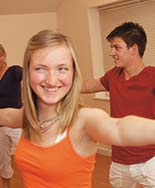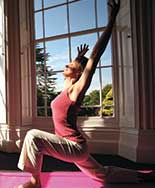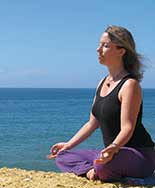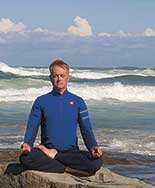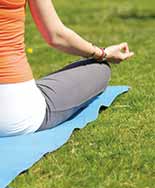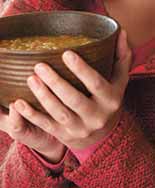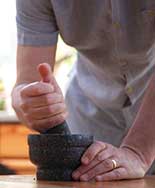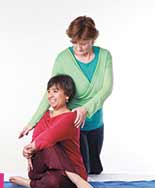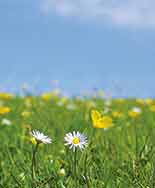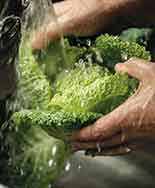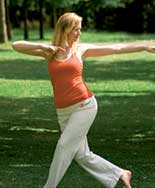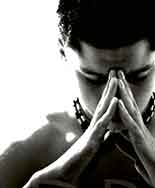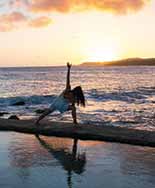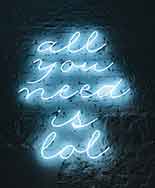
Yogic tips to positively impact our wellbeing
What is a CHAKRA? A chakra is a sanskrit word meaning "wheel" and chakras are a very important part of our subtle or energy body.
Interestingly, in the yogic model of the energy body also parallels in the taoist model. In yoga we talk about ‘prana’ while in TCM they call it ‘chi’. This prana or life force travels through our ‘nadis’ or meridians and the chakras are the major energy centres which rotate or spin with the flow of this life force. This flow of prana enables us to function at our optimum level physically, emotionally, mentally and spiritually. Even though we may not see them (even surgery would not reveal them!) we can have or develop an awareness of our chakra system. Some people seeing colours, some of us feeling sensations and I am told that occasionally people actually do see them!
Where are they?
The seven major chakras are located on a central channel running from the base of the spine to the crown of the head. They run along the ‘sushumna’ nadi which is the most important channel within us as it aligns with the spine in the physical body.
In addition to these major chakras we also have a considerable number of minor chakras in other parts of the body, for example in the palms of our hands and the soles of our feet.
We often talk about chakras being in or out of balance; when they are all in complete balance we are functioning optimally at all levels, whereas when one or more centres are out of balance we may be experiencing physical symptoms, emotional issues, mental disturbances or maybe even spiritual blockages. And so yogic techniques and practices have been developed to help bring us back into balance. In this latest series of blogs I will explore each centre, discuss how an imbalance in that centre may be impacting us and offer some tips to help bring it back into balance and restore our wellbeing. In this blog here today, we will be exploring mooladhara, or the root chakra.
Mooladhara, the Root chakra
Located at the base of the spine (think coccyx and perineum) this centre is often referred to as the base chakra. In many ways it is our foundation, for when it is in balance we feel safe, secure, trusting, grounded, our material needs are met and we are courageous.
So how on earth do we know if it is out of balance? ...well, we may be experiencing any or some of the following:
lower back pain, leg and feet ailments
problems with elimination particularly constipation or diarrhea
colon or prostate issues, eating disorders
generalised anxiety disorder, uncertainty, loneliness, depression
actual material lack, our basic needs not being met
sluggishness, lethargy, inertia, laziness
lack of concern about our own health
fears for our survival
So if you are dealing with any of these challenges it is quite possible that you may need to get your Mooladhara back into balance!
Here are some ideas and tips:
1. Spend time outside, preferably and if possible in nature, preferably barefoot (with care and with deference to the weather, especially in autumn and winter). Simply standing or walking on the earth is one of the easiest ways to ground ourselves.
2. Stand upright (inside or outside) in the Mountain posture, tadasana, feet hip distance apart, knee joints not locked, pelvis in neutral, lengthen through the spine, sternum lifted, shoulders relaxed, arms hanging loosely by your sides; imagine a cord coming out of the crown of your head drawing you upright. Now take your awareness down to the soles of your feet, really feel their connection to the floor or the earth and then close your eyes or soften your gaze and visualise roots growing down from the soles of your feet and into the earth beneath you. Feel them growing deeper and deeper and spreading outwards creating a really steady and stable base for you. Then begin to notice how that makes you feel.
3. In Dru yoga we have some amazing sequences which help to really ground us, notably our foundation Energy Block Release sequence, EBR 1 (here is a link to a YouTube video showing this sequence https://youtu.be/3D1hUiJvmIU) and our Earth sequence (https://youtu.be/IRfS0wgZgvI).
4. There are numerous other yoga postures which we can practise to help to activate and balance Mooladhara, these include Warrior 1, Extended Lateral Triangle, Crocodile, Locust, Siting forward bend and many more besides. If you are unfamiliar with these postures then I suggest you find yourself a good yoga teacher!
5. How about a Mudra? Find a comfortable sitting position and rest the backs of your hands on your thighs so that the palms are facing uppermost and bring the tips of the thumbs to touch the tips of the ring fingers, gently extending the other fingers. Hold this for a few minutes breathing and taking your awareness to the base of your spine.
6. Foods which may help to balance mooladhara include all root vegetables, red foods such as tomatoes, strawberries, apples, pomegranates, cherries and high protein foods. A really powerful (tried and tested!) way to balance mooladhara is to use a positive affirmation, for by doing so we are also tapping into the power of the mind to create important changes mentally, emotionally and physically. There are lots of well researched books on this subject, you could check out the works of Dr Joe Dispenza for instance. You will also be sending out the right messages to the Universe and activating the law of attraction which you can read more about in ‘The Secret’ by Rhonda Byrne. Yogis have known about the power of affirmation for thousands of years!
The affirmations we may use for Mooladhara could be:
I am grounded, safe and secure
I am filled with courage
The universe provided for me
I am anchored and connected to Mother Earth
I love and care about my body
8. And finally, if you take a look at an image of the mooladhara chakra you will see an elephant there, a symbol of strength, steadiness and courage. You may have heard of the deity Ganesh who is half human and half elephant; if we wish we can use a super powerful practice given to us by the yogic tradition whereby we invoke the energy of Ganesh in the mooladhara and repeat this mantra, OM GAM GANAPATAYE NAMAHA.
Blessings to you, dear reader


